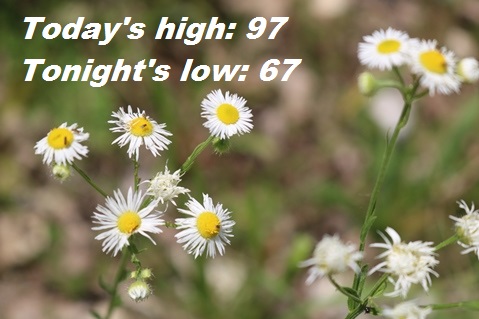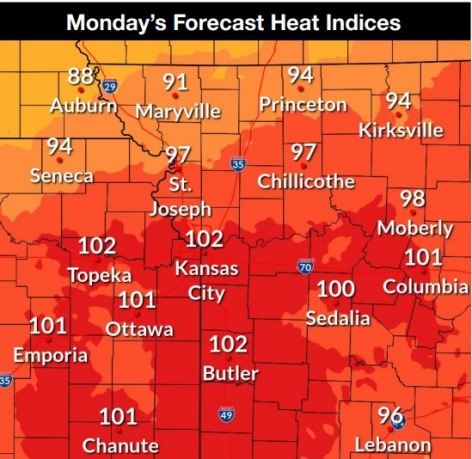by Jacob Fischler, Kansas Reflector
Just before the July 4 holiday, the federal agency that manages offshore energy development proposed a five-year plan for as many as 11 and as few as zero new oil and gas sites in the Gulf of Mexico and off Alaska’s coast.
The proposal would clear the way for up to 10 new oil and gas lease sales in the Gulf and one in federal waters of Cook Inlet — a significant decrease from the 47 lease sales proposed under a 2018 Trump administration draft plan.
But it’s still not enough of a reduction to satisfy climate hawks who say that no amount of new oil and gas development is safe.
Here are five major questions about the proposal:
What does the plan actually do?
The proposal, put out by the Interior Department’s Bureau of Ocean Energy Management, is an intermediate step between a draft and a final program.
In a July 1 release, Interior said the new proposal was narrowed to include only sites in the Gulf and Cook Inlet because there is existing production and infrastructure there. The proposal matches the Obama administration’s five-year plan, which ran from 2017 to 2022 and also approved 10 sites in the Gulf and one off of Alaska’s coast.
The 11 sites in the proposal would be the maximum allowed in a final plan. Interior could remove any in its final program proposal, expected later this year.
After Interior Secretary Deb Haaland approves a final plan, BOEM would hold up to two auctions each year through 2028 for the Gulf sites. Rights to the Alaska site would be auctioned in 2026. Interior could also choose not to conduct sales of sites approved in the final plan.
Will this make gas cheaper right away?
No.
The leases — if they’re approved — won’t be auctioned for months. Once they are, it will take about five years for operations to begin in the shallowest areas and even longer for whatever oil is retrieved there to reach the market.
In some cases, it would take more than a decade before oil companies could begin production on a new lease, according to the draft proposal.
The long lead time means new leases would have virtually no immediate impact on prices at the pump, Stephen Miller, a professor of economics at the University of Nevada, Las Vegas’ Center for Business and Economic Research, said in an email.
The proposal to grant new leases “will not exert any significant effect on current gas prices as the time lags involved before such leases could yield tangible products are measured in multiple years,” Miller wrote.
Sara Teel, an economist with the Alaska Department of Labor and Workforce Development, said Cook Inlet development in particular would have little impact on gasoline prices, as the site mainly produces natural gas.
Also, the proposed plan tentatively scheduled the Cook Inlet auction for 2026, when market conditions could be quite different, Teel said.
Still, proponents of increased drilling have used current high oil and gas prices as a rationale for expanding development.
U.S. House Natural Resources Committee ranking Republican Bruce Westerman of Arkansas implied the timing of the plan’s announcement — 5 p.m. the day before a holiday weekend — was meant to keep attention away.
“Well, Americans noticed,” he said in a statement. “How couldn’t we, when we’re paying more and more each time we fill up our cars with gas? DOI’s statement that the final plan may contain zero lease sales is deeply concerning and would be unprecedented. This administration continues demolishing access to American resources, and we are paying the price at the pump, at the grocery store, and in our family budgets.”
What does this mean for climate change?
It depends, and opinions vary.
The scientific consensus calls for phasing out fossil fuels as soon as possible. The Intergovernmental Panel on Climate Change has said keeping global warming to a 1.5 degrees Celsius rise — the benchmark estimated to be needed to prevent the worst potential climate change impacts — would require reducing greenhouse gas emissions to net-zero by 2050.
President Joe Biden has set a goal of reaching net-zero emissions, meaning the amount of greenhouse gas emissions produced is no more than the amount removed from the atmosphere, by 2050, and a 50% reduction from 2005 levels by the end of this decade.
Issuing new lease sales, which would mean likely oil and gas development well into the 2030s, would threaten those goals, environmental advocates say.
“It would mean a continuing of the status quo, which is already a disaster for people in the Gulf South,” said Kendall Dix, the national policy director for the environmental group Gulf Coast Center for Law and Policy. “We’re already seeing impacts of the climate crisis.”
The proposed plan acknowledges that “to meet these targets, the U.S. will have to drastically change both the way it consumes and also supplies energy, whereby an increase in renewable energy production, electrification, energy efficiency, and reduced consumption assumes less reliance on oil and gas resources and reduced demand.”
But eliminating the supply of domestic offshore oil and gas may not be an effective way to meet those targets, the proposal says.
As long as energy demand remains the same, any reduction in offshore fossil fuel production would have to be filled by other sources of energy, likely fossil fuels, the proposal says.
Who’s happy about this?
Basically no one.
The range of options — from zero to 11 new leases in the next five years — frustrated advocates across the political spectrum.
Environmental advocates say any new oil and gas infrastructure would be giving up on Biden’s campaign pledge to aggressively pursue climate solutions.
“The Biden administration had an opportunity to meet the moment on climate and end new offshore oil leasing in Interior’s five-year program,” Drew Caputo, the vice president of litigation at the environmental group Earthjustice, said in a statement. “Instead, its proposal to serve up a bunch of new offshore oil lease sales is a failure of climate leadership and a breach of their climate promises.”
Even in Biden’s own party, congressional leaders on energy policy were split about whether the proposal allowed too much or too little development.
“Holding any new offshore oil and gas lease sales over the next five years is a lose-lose for Americans,” U.S. House Natural Resources Committee Chairman Raúl M. Grijalva, an Arizona Democrat, said in a statement.
“It will do nothing to help lower prices at the pump, and it will make our emissions goals virtually impossible to achieve … Adding any new lease sales to that equation while the climate crisis is unfolding all around us is nonsensical.”
“I am disappointed to see that ‘zero’ lease sales is even an option on the table,” Senate Energy and Natural Resources Chairman Joe Manchin III, a Democrat from West Virginia, said.
“I hope the Administration will ultimately greenlight a plan that will expand domestic energy production, done in the cleanest way possible, while also taking the necessary steps to get our offshore leasing program back on track to give the necessary market signals to provide price relief for every American.”
The American Petroleum Institute, the trade group representing U.S. oil and gas producers, also said in a statement that it opposed a no new lease sales policy.
So why did the Biden administration do this?
Five-year plans for offshore leasing are required by law and the previous plan, approved under President Barack Obama in 2016, expired June 30. Without a plan, the agency cannot issue new leases.
Republicans in Congress hammered the administration for not having a five-year plan ready by the time the Obama-era one expired.
U.S. Rep. Garret Graves, the ranking member on the House Select Committee on the Climate Crisis, said it was the first time the offshore leasing program had a lapse.
“It should have never happened — the Department of Interior literally had years to plan for it and still have additional steps to go,” the Louisiana Republican said. “Their self-imposed delays are contributing to higher prices, less certainty and more dependence on Iran, Venezuela and others.”
Biden has made no secret of his ambition to slow oil and gas production in federal waters and on federal lands. After campaigning on addressing the climate crisis, one of his first acts as president was to pause offshore and onshore oil and gas leasing.
But a federal judge ruled last year that the administration had to restart leases, saying federal law required periodic lease sales and only Congress could change that law. The administration announced it was restarting lease sales two months after that decision.
It’s unclear whether the ruling had any impact on this month’s proposed plan.
The presence of a no leases option in the proposal, though, indicates Interior does believe it has the authority to not hold new lease sales, Dix said.
An Interior spokesperson declined to answer questions about to what extent last year’s ruling influenced the proposal.
Kansas Reflector stories, www.kansasreflector.com, may be republished online or in print under Creative Commons license CC BY-NC-ND 4.0.
See more at https://kansasreflector.com/2022/07/10/5-big-questions-about-the-new-biden-plan-for-offshore-oil-and-gas-leases/


